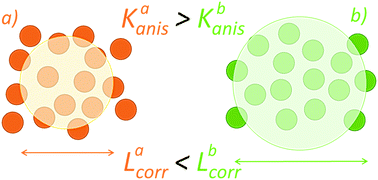The interplay between single particle anisotropy and interparticle interactions in ensembles of magnetic nanoparticles†
Abstract
This paper aims to analyze the competition of single particle anisotropy and interparticle interactions in nanoparticle ensembles using a random anisotropy model. The model is first applied to ideal systems of non-interacting and strongly dipolar interacting ensembles of maghemite nanoparticles. The investigation is then extended to more complex systems of pure cobalt ferrite CoFe2O4 (CFO) and mixed cobalt–nickel ferrite (Co,Ni)Fe2O4 (CNFO) nanoparticles. Both samples were synthetized by the polyol process and exhibit the same particle size (DTEM ≈ 5 nm), but with different interparticle interaction strengths and single particle anisotropy. The implementation of the random anisotropy model allows investigation of the influence of single particle anisotropy and interparticle interactions, and sheds light on their complex interplay as well as on their individual contribution. This analysis is of fundamental importance in order to understand the physics of these systems and to develop technological applications based on concentrated magnetic nanoparticles, where single and collective behaviors coexist.



 Please wait while we load your content...
Please wait while we load your content...